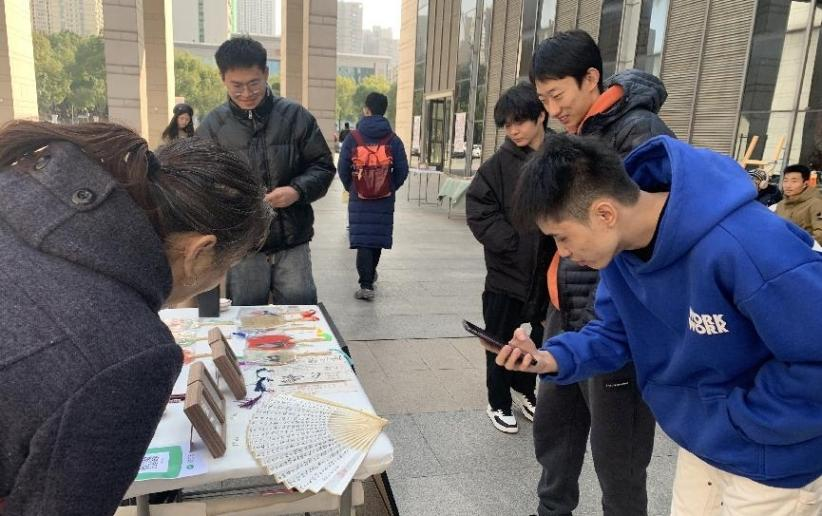From November 24 to 26, SCMU’s renowned “Most Beautiful National Trend” Cultural and Creative Competition, now in its fourth successful year, was hosted at the Guanggu Art Museum Plaza. This event, a collaboration between the School of Innovation and Entrepreneurship and the School of Fine Arts, showcased the fusion of traditional Chinese culture with modern creative ideas.
Initiated in 2020, this annual competition celebrates China’s rich intangible cultural heritage and fosters innovation and entrepreneurship among students. Gaining momentum each year, the 2023 Creative Market transformed student design projects into commercial products, bringing a fresh and innovative perspective to traditional Chinese art and culture.
Since its kickoff in September, the competition attracted over 90 group entries from various schools. An expert panel selected 24 outstanding projects for the Creative Market showcase.
The market featured a diverse array of cultural products, highlighting the unique talents of SCMU’s students. Offerings included sophisticated Miao ethnic headpieces, distinct ink paintings, unparalleled pottery, and finely crafted glassware. The variety extended to smaller items like keychains, acrylic badges, postcards, stamp stickers, mouse pads, canvas bags, coasters, desk calendars, notebooks, and stickers. The stalls drew a crowd of teachers, students, and local residents eager to explore, purchase, and experience.

Cultural and Creative Works Attract Crowds for Viewing and Purchasing.
Photographed by Xie Yiming

Cultural and Creative Works Draw Attention for Photo Keepsakes.
Photographed by Xie Yiming
Wang Danyi, a 2022 graduate student in Animation Art, shared her inspiration from traditional shadow puppetry, leading her to create zodiac and popular cartoon figures. Wang Le, a Visual Communication Design student from the 2021 cohort, took inspiration from Dabujiang patchwork embroidery of Chenzhou, Hunan province, featuring motifs of “fierce” animals like tigers and toads-symbols of protection and good fortune in local folklore. In her designs, she skillfully blended these traditional patterns with contemporary elements from various regional styles.
Teachers and community workers were impressed with the Creative Market, expressing their desire for such enriching events to be an annual affair. They lauded the initiative for deepening cultural understanding and bolstering cultural pride and national identity among the SCMU community.
Edited by Liu Qiong, Reviewed by Lei Changsheng